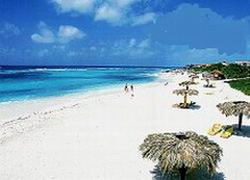Preservation of Cuban Seas on the rise
- Submitted by: admin
- Environment
- national
- 07 / 02 / 2010

To take in at least 15 percent of the insular platform and the fourth part of the coral reefs is one of the goals of the National System of Protected Areas (SNAP), with impacts in Pinar del Rio.
With the 14 municipalities having basins, the scientific potential of the Cuban westernmost province is immersed into all the conservation modalities, territorial reports of the Ministry of Science Technology and the Environment show.
Links between that sector and tourism have repercussion in the satisfactory preservation of biodiversity, in spots like the biosphere reserve in Guanahacabibes Peninsula, with over 150 immersion points destined to contemplative diving.
Specialized publications mark year 1989 as the date when the protection of the safekeeping of Cuban sea areas started, a labor less developed than the sector emerged from waters, where the tradition is bigger in regard to research.
That made the experts look towards the seas, which treasure biodiversity, landscape wealth with cultural and historical values, and a space for fishing activity, highly demanded worldwide with sustainable criteria.
Cuba has more than 100 coastal areas to be part of the SNAP, almost 50 out of them with national recognition, while several spots are kept under the zones of protection with special usage regime, promoted by the fishing sector of the Ministry of Food Industry, and the diving entities.
Likewise, the Caribbean nation with some 3 603,95 miles of coasts, reports a process to declare the reef system and the National Park Cienaga de Zapata as World Heritage Site, since it is the biggest wetlands of the Caribbean.
With the 14 municipalities having basins, the scientific potential of the Cuban westernmost province is immersed into all the conservation modalities, territorial reports of the Ministry of Science Technology and the Environment show.
Links between that sector and tourism have repercussion in the satisfactory preservation of biodiversity, in spots like the biosphere reserve in Guanahacabibes Peninsula, with over 150 immersion points destined to contemplative diving.
Specialized publications mark year 1989 as the date when the protection of the safekeeping of Cuban sea areas started, a labor less developed than the sector emerged from waters, where the tradition is bigger in regard to research.
That made the experts look towards the seas, which treasure biodiversity, landscape wealth with cultural and historical values, and a space for fishing activity, highly demanded worldwide with sustainable criteria.
Cuba has more than 100 coastal areas to be part of the SNAP, almost 50 out of them with national recognition, while several spots are kept under the zones of protection with special usage regime, promoted by the fishing sector of the Ministry of Food Industry, and the diving entities.
Likewise, the Caribbean nation with some 3 603,95 miles of coasts, reports a process to declare the reef system and the National Park Cienaga de Zapata as World Heritage Site, since it is the biggest wetlands of the Caribbean.
By Elena Milián Salaberri
Source: Guerrillero
Comments